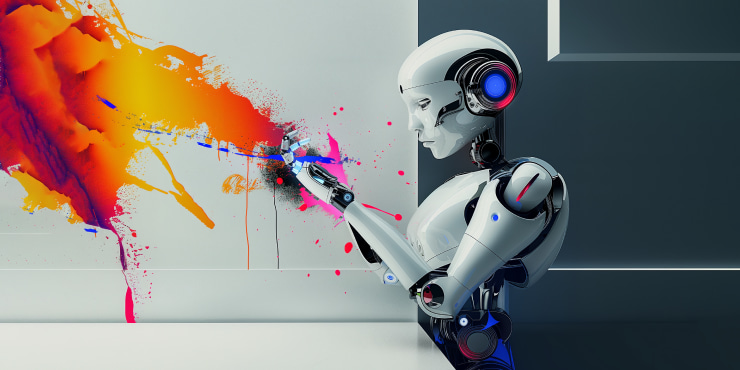In the rapidly evolving world of digital design, AI for adaptive visuals is transforming how creators approach their work. This technology is not only reshaping the landscape of visual design but is also enhancing the tools available for digital creators. By integrating AI into their workflow, designers can achieve more dynamic, flexible, and personalized visual content. Lets delve deeper into how AI is making waves in the realm of adaptive visuals.

Understanding AI in Visual Design
Artificial Intelligence (AI) in visual design refers to the use of machine learning algorithms to create, modify, and enhance visual content. This involves processes such as image recognition, pattern detection, and adaptive design elements. AI-driven tools can analyze vast amounts of data to generate visuals that are not only aesthetically pleasing but also contextually relevant.
The Rise of Adaptive Visuals
Adaptive visuals are graphics that can change and adjust based on specific user interactions or environmental conditions. This capability is incredibly valuable for digital creators who need to tailor content to different audiences or platforms. AI plays a crucial role in making these visuals possible by automating and optimizing the adaptation process.
Benefits of AI for Adaptive Visuals
There are numerous benefits to using AI for adaptive visuals. These include increased efficiency, improved accuracy, and the ability to create more personalized user experiences. AI can quickly process and adapt visuals to suit different devices and preferences, ensuring that content is always optimized for the end user.
How AI Enhances Creative Processes
AI assists digital creators by taking over repetitive tasks and providing insights that may not be immediately apparent. This allows creators to focus more on the creative aspects of their projects. For example, AI can suggest color schemes, design layouts, and even generate content based on initial input. Check out how AI processes design inputs to understand how these advancements are applied.
AI Tools for Digital Creators
Various AI tools are available to assist digital creators in developing adaptive visuals. These include platforms like Canva’s Magic Design, which uses AI to suggest design elements, and other tools that provide AI-driven templates and graphics. These resources make it easier for creators to produce high-quality content without extensive design expertise.
Integrating AI into Your Workflow
Incorporating AI into your workflow can significantly enhance your productivity and creativity. By using AI-powered tools, creators can streamline their processes and focus more on conceptualizing and refining their ideas. Tools like those found at AI plugins for graphic software offer valuable integrations that can automate various design tasks.
Challenges and Considerations
While AI offers numerous advantages, there are also challenges to consider. These include issues related to data privacy, the potential for over-reliance on technology, and the need for continuous learning to keep up with new developments. Digital creators must balance the use of AI with their own creative instincts to ensure that their work remains authentic and innovative.
Future of AI in Adaptive Visuals
The future of AI for adaptive visuals is promising, with ongoing advancements expected to further revolutionize the field. As AI technology continues to evolve, we can anticipate even more sophisticated tools that offer greater customization and interactivity. These developments will provide digital creators with unprecedented opportunities to push the boundaries of what is possible in visual design.
Real-World Applications
AI-driven adaptive visuals are already being used in various industries, from advertising and marketing to gaming and virtual reality. Companies are leveraging AI to create personalized ads, immersive gaming experiences, and interactive virtual environments that engage users in new and exciting ways.
AI and Artistic Expression
Beyond commercial applications, AI is also influencing artistic expression. Artists are using AI to explore new forms of creativity, producing works that blend human intuition with machine-generated patterns. This synergy is opening up new avenues for artistic exploration and innovation. Learn more about this in AI for artistic expression.
Conclusion
In conclusion, AI for adaptive visuals is a game-changer for digital creators, offering tools and capabilities that were once unimaginable. By embracing AI technology, creators can enhance their work, streamline their processes, and produce content that is both innovative and engaging. As we continue to explore the potential of AI in visual design, the possibilities are truly endless.

FAQs
What are adaptive visuals?
Adaptive visuals are graphics that can change based on user interactions or environmental conditions, making them highly versatile for digital design.
How does AI assist in visual design?
AI assists in visual design by automating repetitive tasks, suggesting design elements, and optimizing visuals for different platforms and audiences.
What are some popular AI tools for creators?
Popular AI tools for creators include platforms like Canva’s Magic Design and various AI plugins for graphic software, which provide design suggestions and automated features.







